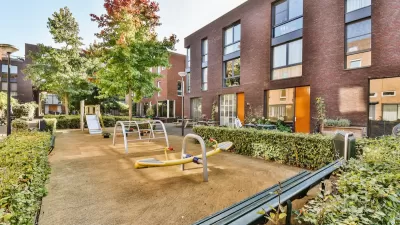Jonathan O’Connell looks at Washington's remarkable growth over the past decade, as the city has become a magnet for young professionals, and wonders if the city will be able to retain those residents as they become parents.
Over the last decade, successive administrations and their teams of urban planners have focused on attracting young professionals to D.C. with ambitious plans for growth. And their efforts have been hugely successful. With the city's population having increased by more than 45,000 residents since 1999, and the majority of the newcomers between 18 and 34, "The influx of newcomers has transformed the city from a symbol of civic dysfunction and drab government offices to a cosmopolitan hub - an urban playground," writes O'Connell.
"What D.C. hasn't yet figured out, or even really planned for, is what happens when this raft of newcomers grows out of one-bedroom condo living. What happens when their lives evolve past the urban-playground stage and they are less interested in speakeasies than in parks for their kids?"
O'Connell advocates for city leaders to pay more attention to providing places to east and play for children, diversifying the housing stock, improving schools, and building parks to fully capitalize on its recent transformation.
FULL STORY: D.C.’s growth is fueled by 20-somethings. Can the city grow up with them?

Planetizen Federal Action Tracker
A weekly monitor of how Trump’s orders and actions are impacting planners and planning in America.

Map: Where Senate Republicans Want to Sell Your Public Lands
For public land advocates, the Senate Republicans’ proposal to sell millions of acres of public land in the West is “the biggest fight of their careers.”

Restaurant Patios Were a Pandemic Win — Why Were They so Hard to Keep?
Social distancing requirements and changes in travel patterns prompted cities to pilot new uses for street and sidewalk space. Then it got complicated.

Platform Pilsner: Vancouver Transit Agency Releases... a Beer?
TransLink will receive a portion of every sale of the four-pack.

Toronto Weighs Cheaper Transit, Parking Hikes for Major Events
Special event rates would take effect during large festivals, sports games and concerts to ‘discourage driving, manage congestion and free up space for transit.”

Berlin to Consider Car-Free Zone Larger Than Manhattan
The area bound by the 22-mile Ringbahn would still allow 12 uses of a private automobile per year per person, and several other exemptions.
Urban Design for Planners 1: Software Tools
This six-course series explores essential urban design concepts using open source software and equips planners with the tools they need to participate fully in the urban design process.
Planning for Universal Design
Learn the tools for implementing Universal Design in planning regulations.
Heyer Gruel & Associates PA
JM Goldson LLC
Custer County Colorado
City of Camden Redevelopment Agency
City of Astoria
Transportation Research & Education Center (TREC) at Portland State University
Camden Redevelopment Agency
City of Claremont
Municipality of Princeton (NJ)





























